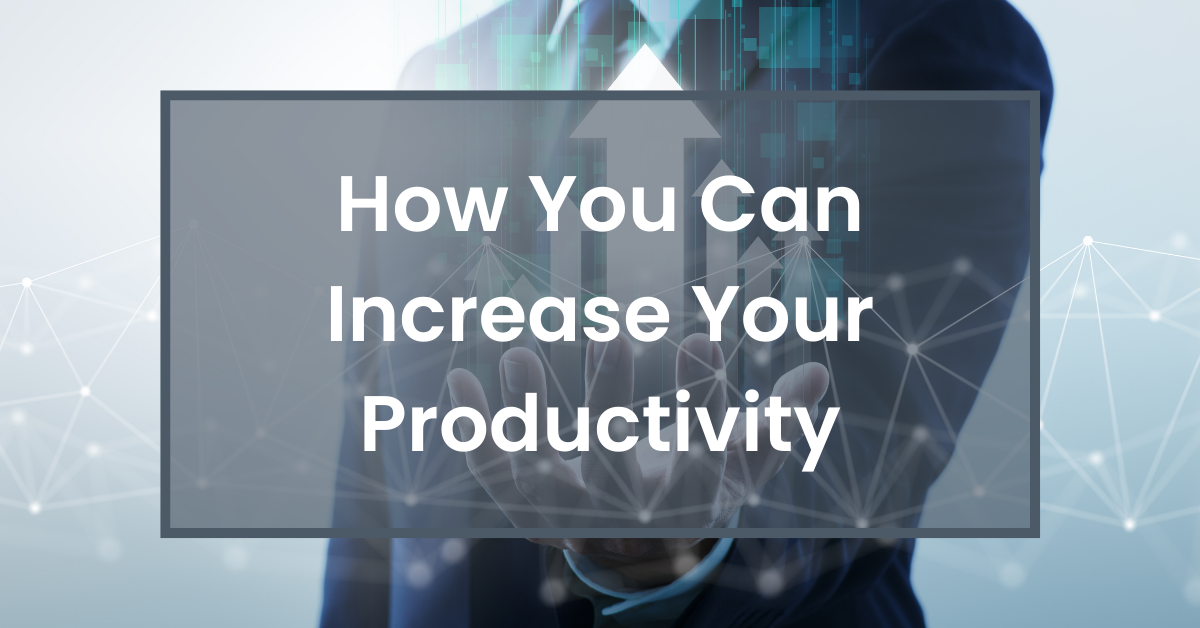Do you sometimes wonder how you can increase your productivity?
Productivity at work is a hot topic of debate now, and there is also growing discussion of personal productivity at the individual level.
How can Effective Intelligence help you be more productive?
What is Productivity?
Broadly speaking, productivity refers to the level of efficiency with which you or your team are able to complete whatever tasks there are that need to be done.
Looking at it from the company level, productivity essentially means the speed and efficiency with which the company can produce its goods or services and deliver them to the market.
Purely conceptually then, the productivity of a team or an individual can be deduced by the amount of output they deliver compared to the amount of input needed. That input could be time, energy, resources or finances – or indeed a combination of all of these.
Looking at these inputs as investments, we see that if you are measuring productivity, you are in fact measuring return on investment.
There is no doubt at all that everyone is looking for better productivity for themselves and their teams.
How You Can Increase Your Productivity with Effective Intelligence
At Effective Intelligence we have a saying:
“Thinking fuels and enhances all other skills, so that investment in raising thinking performance brings returns in all activities.”
This leads to a perfectly logical conclusion. As we are looking at productivity as a return on investment, then increasing your thinking performance is the absolute best way to get that better return you are looking for.
So how does this work?
Understanding your Thinking-Intentions Profile
Whether you operate alone or in a team or large organisation, in every case, the results you and your colleagues get come from the actions that you decide to take.
The thing about our actions is that, although we are all aware that they happen as a result of our mental operations, nobody is really thinking about what exact mental operations are occurring and whether they might be appropriate to that specific task or not!
This is what can so easily lead to very poor productivity. If you apply the wrong thinking to a given task, you won’t achieve your desired result. This can be a big problem.
Through a very well-tested model, Effective Intelligence shows us that our thoughts are driven by a set of invisible forces known as Thinking-Intentions.
The fascinating thing about this is that each individual, including you, has their own innate and hidden preferences when it comes to which Thinking-Intentions they like to use.
Your complete personal set of thinking preferences makes up your very own unique Thinking-Intentions Profile.

In this diagram, you can clearly see how your individual thinking preferences (your profile) directly affect your results on the cause-effect chain.
Thinking Preferences and Productivity
If we prefer things, it means that we like doing them. This means that we are a lot less likely to become tired doing these things.
For example, if you really like spreadsheets and data, you’ll quite happily work away at them for hours without even noticing where the time is going. No sweat.
At the same time, you may really not enjoy coming up with creative new ideas. You may find this tiresome and boring. It might even give you a headache because of all the energy you need to summon to be able to do it.
Conversely, another member of your team might be your opposite. They may love being creative and not find it taxing at all.
If you put them to work on a spreadsheet, it might take them all day to grind it out and they’ll hate you for it too!

These are of course simple examples. Thinking-Intentions are much more refined and specific in terms of areas of preference. In fact, there are 21 of them in total.
Now of course, preference and ability are not always correlated. Some people are really good at things but dislike them at the same time, and vice versa.
With that said though, more often than not there is a correlation between preference and ability. If you enjoy something, you’ll do it often. Just like when you exercise a muscle frequently, you build strength with it and get better at that thing over time.
So in the context of productivity, what we can see here is that if we want to be efficient with our time, energy and resources, we need to assign the right people to the task in hand.
If you know the preferences of yourself and your team members, you can start to build a picture of who is best suited to which component of the task.
The good news is that you can gain this knowledge by understanding the Thinking-Intentions Profiles of both yourself and your team.
Personal Productivity
If you are tackling things alone, you don’t have the luxury of assigning team members to difficult task components if they are a better fit for them than you are.
This is no reason to give up though! Here’s how you can increase your productivity on a personal level…
If you are operating solo, you just need to have even more awareness of your own thinking preferences so that you can apply full consciousness and awareness when you approach your tasks alone.
With the self-awareness you get from knowing your own Thinking-Intentions Profile, you can make sure that you apply the right strategies every time.
This is because you will be aware of the type of thinking that is required by the task, rather than just operating with unconscious bias, doing ‘what feels right’ and potentially getting poor results.
How You Can Increase Your Productivity – Today!
If you are interested in raising your game and being considerably more productive, whether you operate alone, in a team, or even in a large organisation, then we have just the thing for you.
We are currently offering a completely free package which will enable you to get 3 Key Strategic Insights about your very own unique Thinking-Intentions Profile. Click here to get access now.








